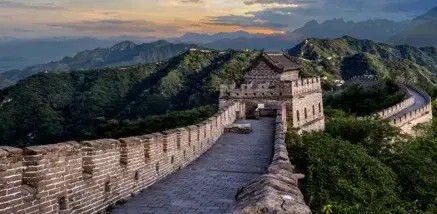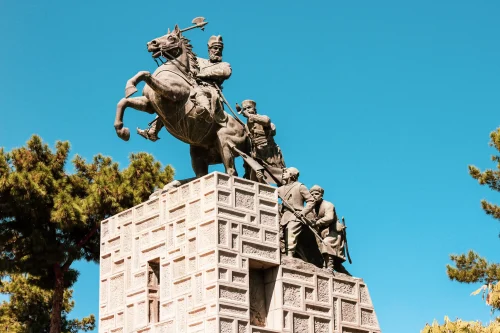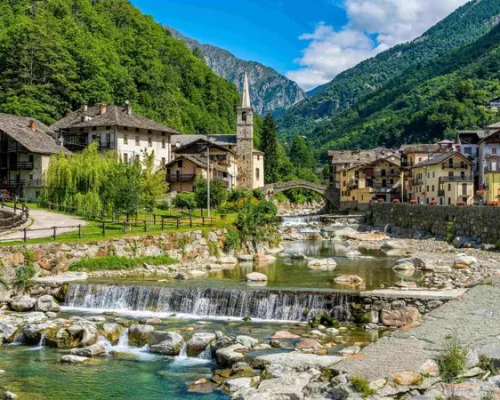The Great Wall of China | A Guide to Visiting the Stone Dragon
The Great Wall of China, one of the largest and most famous historical sites in the world, is recognized as a symbol of ancient human engineering marvel. Stretching over five thousand kilometers and crossing diverse regions of China, it stands like a stone dragon over mountains and lush plains, illustrating the rich history of this land. Visiting the Great Wall of China offers a unique opportunity to gain a deeper understanding of China’s history and culture. In this guide, we explore different sections of the Wall, important tips for visitors, and recommendations for planning a suitable trip. For more information on how to book a tour or get travel advice to China, you can call 02191091190 or email info@irancharter.ir.
History of Construction and Development
The Great Wall of China, one of the largest and most ancient engineering structures in the world, has a tumultuous history. The construction of this wall dates back to the seventh century BC, a time when the early Chinese emperors used it as a defensive border against northern invaders. Throughout different historical periods, later emperors like Emperor Qin Shi Huang and subsequent dynasties rebuilt and extended various sections of the wall to ensure this massive structure remained intact. The development of the Great Wall of China reflects the Chinese people’s engineering and strategic capabilities in protecting their territory and preserving their cultural and political independence.
Prominent Sections and Natural Landscapes
The Great Wall of China consists of several sections, each with its unique features and landscapes. Among the most prominent sections are Badaling, a highly visited tourist spot, Mutianyu, known for its stunning watchtowers and family-friendly walking paths. Additionally, Jinshanling offers mountainous vistas, and Simatai showcases a blend of ancient architecture and untouched nature, making them other notable parts of the Great Wall. Each of these sections provides a unique opportunity to witness the natural and historical beauties of China.
Essential Visitor Tips
Visiting the Great Wall of China is an unparalleled experience, but to ensure it is as pleasant as possible, following some key tips is crucial. The first tip is to choose the right time to visit; spring and autumn are preferable due to their milder weather and more beautiful scenery. Secondly, wearing comfortable and suitable walking shoes is essential, as the paths are often steep and long. Prioritizing your safety and avoiding littering is highly recommended to help preserve this cultural heritage. Finally, using reputable tours and local guides can significantly enhance your understanding of the construction and history of the Great Wall of China.
Travel Guide and Planning
Careful planning before traveling to the Great Wall of China can significantly enhance your experience. Deciding which sections to visit is of particular importance; for example, Badaling is more suitable for first-time visitors and families, while Jinshanling is recommended for those interested in more challenging hikes. Also, booking accommodations near these sections and purchasing entry tickets online can prevent potential problems. Moreover, studying the routes and the facilities available in each section will help you have a more comfortable and stress-free journey.
Watchtowers and Guard Towers
One of the unique attractions of the Great Wall of China is its watchtowers strategically positioned at regular intervals along the wall. These towers were historically used for quick communication and reporting enemy attacks. Each tower boasts its own architectural style and often features significant artistic and cultural decorations. Beyond its military function, these towers hold special significance as cultural and historical symbols in preserving the Great Wall’s heritage. Visitors can closely explore the structures and designs of the guard towers and enjoy the breathtaking views and memorable images from the tops of the towers.
Best Season to Visit
Choosing the best season to visit the Great Wall of China can greatly impact your experience. Spring (April to May) offers moderate weather and blooming nature, creating an ideal environment for walking and viewing the beautiful mountain and forest vistas. Autumn (September to November) is also delightful with its changing leaf colors and cool weather. Summers (June to August) may be very hot and humid, while winters (December to March) could be cold and snowy, making visits challenging. Therefore, it is recommended that spring or autumn be chosen as the best seasons to visit the Great Wall of China.
Cultural and Historical Significance
The Great Wall of China is not only an immense defensive structure but also a symbol of China’s rich history and culture. This wall holds countless stories of powerful armies, military strategies, and social challenges that showcase different aspects of Chinese civilization. In addition to its defensive role, the Great Wall of China is recognized as a significant tourist attraction and a UNESCO cultural heritage site, attracting millions of visitors annually. This magnificent monument reflects ancient architectural artistry and Chinese engineering prowess, holding a special place in the heart of human history.
Safety Tips and Travel Preferences
Safety while traveling to the Great Wall of China is paramount, and adhering to a few key tips can make your trip safer and more enjoyable. First, ensure you select clothing appropriate for the weather; in spring and autumn, clothing should suit the moderate warmth and coolness. Second, always bring water and snacks to maintain your energy during long walks. Third, walking in paved and steep areas requires greater awareness and caution; therefore, exercise extra care during crowded times or at night. It is also advised to use safety gear like suitable footwear and hats to prevent any potential injuries. Finally, always pay attention to instructions and guide signs to follow designated paths and avoid getting lost.
Visitor Experiences and Stories
Visitor experiences at the Great Wall of China can be inspiring and serve as valuable guides for future travelers. Many tourists have recounted their experiences of walking along the wall and enjoying its unparalleled vistas. Some have referred to the historical tales and legends associated with the wall, instilling a sense of being transported to past eras. Additionally, photos and videos taken by visitors of the watchtowers, mountains, and surrounding plains have left unforgettable memories in their minds. These stories and experiences signify the endless allure and impact of the Great Wall of China on the hearts and minds of visitors from around the world.
Frequently Asked Questions
- What is the Great Wall of China and why was it built?
- The Great Wall of China is one of the most famous ancient defensive structures, built to protect the Chinese Empire from northern tribes. It symbolizes the power and grandeur of China, playing an important role in the country’s history and culture.
- How long is the Great Wall of China?
- The total length of the Great Wall of China is approximately 21,196 kilometers, constructed and extended over different historical periods.
- Which sections of the Great Wall of China are most popular with tourists?
- Sections such as Badaling, Mutianyu, Jinshanling, Simatai, and Jiayuguan are among the most popular and frequently visited parts of the Great Wall, each featuring unique characteristics and scenery.
- When is the best time to visit the Great Wall of China?
- The best time to visit the Great Wall of China is during the spring (April to May) and autumn (September to November) when the weather is temperate, and the natural scenery is beautiful.
- How can one visit the Great Wall of China?
- Several sections of the Great Wall of China are open to visitors, who can explore these scenic areas using cable cars, walking, or camping.
- What is the historical background of the construction of the Great Wall of China?
- The construction of the Great Wall of China began during the Qin Shi Huang dynasty in 221 BC and continued throughout various Chinese dynasties. In later periods, new sections were added and reconstructed.
- What is the cultural and historical significance of the Great Wall of China?
- The Great Wall of China is not just a defensive structure; it is a symbol of China’s culture, history, and human ingenuity. It is an important part of China’s cultural heritage and contains numerous historical relics and stories.
- Is the Great Wall of China a UNESCO World Heritage Site?
- Yes, the Great Wall of China was listed as a UNESCO World Heritage Site in 1987, reflecting its global significance.
- What materials were used in the construction of the Great Wall of China?
- The primary materials used in the construction of the Great Wall of China include bricks, stones, wood, lime mortar, and tamped earth. In some sections, holes and slots were used for shooting and defense.
- Is the Great Wall of China still standing?
- Yes, many portions of the Great Wall of China are still standing and remain a major tourist attraction in China. However, some sections require restoration due to erosion and damage.
- What defensive role did the Great Wall of China play?
- The Great Wall of China served as a defensive barrier to prevent northern invaders. With numerous watchtowers and shelters, the wall effectively thwarted military attacks.
- Is it possible to walk on the Great Wall of China?
- Yes, many sections of the Great Wall of China allow visitors to hike. Some sections offer easier walking paths, while others are suitable for hikers and those with higher fitness levels.
- Can the Great Wall of China be seen from space?
- Despite myths, the Great Wall of China cannot be seen from space. It is large but too narrow and similarly colored to be distinguishable by spacecraft.
- How has the Great Wall of China impacted the economy and trade?
- The Great Wall of China significantly impacted the economy and trade. While it prevented enemy attacks and ensured the security of the Chinese Empire, it also played a crucial role in controlling trade routes and preventing goods smuggling.
- What are the challenges of maintaining the Great Wall of China?
- Maintaining the Great Wall of China involves challenges such as natural erosion, damage by environmental and human factors, the need for repairs and reconstruction, and preserving its historical authenticity.
- During which period was the Great Wall of China restored and rebuilt?
- The Great Wall of China underwent the most restoration and reconstruction during the Ming Dynasty (1368-1644). During this period, various sections of the wall were connected and its structure was fortified.












